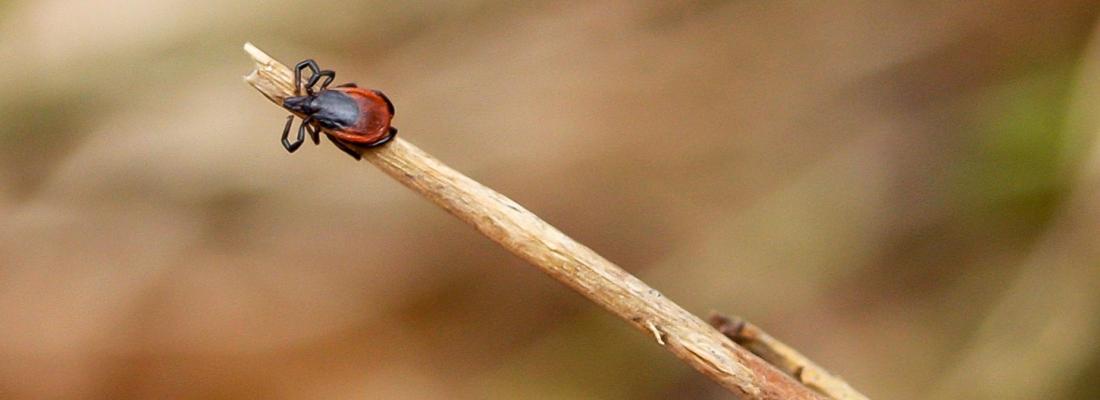Food, Global Health Reading time 2 min
Tick microbiota and its role in carrying and transmitting pathogens
Published on 07 July 2021

In Europe, ticks are the main vector of human and animal pathogens. Ixodes Ricinus is the most abundant tick species in Europe, and the causative agent of Lyme disease. In order to identify, in the future, potential new strategies to fight ticks, researchers are focusing on determining the dynamics and understanding the role of one of their major components: their microbiota. In addition to pathogens, ticks carry other microorganisms in their microbiota. But what is the composition of the tick microbiota and how does it change over time? Moreover, what is its role in the acquisition and transmission of pathogens?
To answer these questions, scientists from INRAE and the University of Zaragoza conducted a three-year field study on Ixodes ricinus.
During the study, researchers collected ticks every month from a specific plot in the Sénart forest (Île-de-France, France). They started by testing nearly 1000 ticks to see whether or not they carried pathogens. Then, they proceeded to analyse the composition of the microbiota of 557 ticks using high-throughput sequencing, managing to identify interactions between members of the tick microbiota and several pathogens through specific statistical analyses.
Microbiota varies seasonally and according to the presence of certain pathogens
By carrying out various statistical analyses, the research team showed that the composition of tick microbiota varies from one month to another, following a pattern that repeats itself every year. The microbiota presents a dynamic composition that seems to evolve from March and April to September and October. Researchers also identified specific interactions between some members of the tick microbiota and a few pathogens, notably bacteria of the genus Rickettsia, which, when transmitted to humans, can cause fever, headache and skin rashes. Additionally, microbiota composition of ticks carrying pathogens was found to be different from that of those who do not. Finally, the team highlighted the interactions between certain members of the microbiota—in particular bacteria of the Spiroplasma genus—and other bacteria, which could indicate the presence of a parasitoid wasp in ticks. In this instance, the bacteria of the microbiota could be involved in defence mechanisms against this tick parasite.
The study allowed researchers to characterise the evolution of the tick microbiota, and its interactions with pathogens over three consecutive years. The results obtained suggest that several members of the tick microbiota promote or prevent the presence of pathogens in ticks. Research will now move their research to the lab, to confirm their field observations and to characterise the role of the various interactions observed. This first study paves the way for research on the use of tick microbiota as a biological tool against pathogens transmitted by this parasite.
Reference
Lejal E, Chiquet J, Aubert J, Robin S, Estrada-Peña A, Rue O, Midoux C, Mariadassou M, Bailly X, Cougoul A, Gasqui P, Cosson JF, Chalvet-Monfray K, Vayssier-Taussat M, Pollet T. Temporal patterns in Ixodes ricinus microbial communities: an insight into tick-borne microbe interactions, Microbiome 03 July 2021 DOI : https://doi.org/10.1186/s40168-021-01051-8
